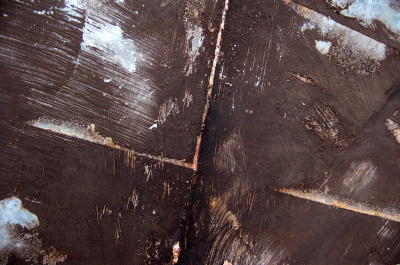What Is Crocidolite Asbestos?
One of the six varieties of naturally occurring mineral fibres classified as asbestos is crocidolite. Due to its distinctive blue-grey colour, it is frequently referred to as "blue asbestos". According to science, crocidolite asbestos has an extended structure and is composed of amphibole silicates. This kind of asbestos is distinguished by its thin, needle-like structure, which quickly breaks down and disperses into the air when disturbed. It may be found all over the world, including South Africa, Australia, Russia, and Ukraine. Due to its thinness and ease of inhalation, crocidolite asbestos is often regarded as one of the most hazardous kinds of asbestos. Therefore, anyone exposed to it - whether via work contact or residing close to a source - runs the chance of experiencing severe health issues, such as mesothelioma cancer. Studies have revealed that even minor exposures to crocidolite asbestos might raise a person's risk of mesothelioma.
Crocidolite Asbestos And Mesothelioma
Mesothelioma is a particularly lethal kind of cancer that mostly attacks the lining of the lungs and chest cavity in humans. It is an uncommon but fatal kind of cancer that has a close connection to asbestos exposure. According to studies, even modest amounts of crocidolite asbestos exposure can lead to mesothelioma in susceptible individuals. Crocidolite asbestos has been labelled a carcinogen by the International Agency for Research on Cancer, and other organisations are now urging people not to come into contact with it in any way. In comparison to mesotheliomas brought on by other forms of asbestos, those brought on by crocidolite tend to be more aggressive and are hence more difficult to cure. After a person has been exposed to crocidolite asbestos for the first time, it normally takes 20 to 50 years before mesothelioma symptoms start to manifest.
Asbestos is a rare and deadly disease that can cause mesothelioma. It develops when slender, loose asbestos fibres ingest the lining of the lungs or belly and become trapped there. These fibres cause tissue to itch and deteriorate. After diagnosis, the average patient lives for about a year, however, therapy might increase that time. Radiation, chemotherapy, immunotherapy, and surgery are the four basic ways to treat mesothelioma. In order to extend your survival time, doctors frequently mix them. New techniques include gene therapy, virotherapy, and fields that cure tumours.

Need assistance finding asbestos removal near you?
Get a QuoteCrocidolite Asbestos In Cigarettes
Various industries employed a variety of asbestos products, mostly in construction supplies and infrastructure. Similar items had crocidolite asbestos, but there is proof that a particular brand of cigarettes contained the dangerous substance. Crocidolite asbestos was present in the first Kent Micronite cigarette filter from 1952 to 1956, according to a report from the Association for Cancer Research. Experts analysed cigarettes from brand-new, unopened packs made and supplied by Kent in their study. According to the study, one cigarette filter contained about 10 milligrammes of crocidolite asbestos.
The mainstream smoke from each cigarette's first two puffs included crocidolite fibres. Anyone who smokes a pack of Kent Micronite cigarettes a day would inhale more than 131 million crocidolite fibres longer than 5 micrometres in a year at these claimed asbestos exposure rates. Unfortunately, the development of mesothelioma might take 20 to 70 years. Patients often do not have a bright outlook for the future after they have been diagnosed. Asbestos was present in cigarettes until 1956, according to the report, therefore the majority of smokers have either been diagnosed with or have passed away from an asbestos-related disease like mesothelioma, or their bodies have expelled the fibres before they could cause cancer. To protect yourself, it's crucial to be informed of where asbestos is present.
Occupational Exposure To Crocidolite Asbestos
Crocidolite asbestos was widely utilised in South Africa, Bolivia, and Australia; it was mined in these locations. Occupational asbestos exposure and mesothelioma were originally mentioned in a 1960 paper by J. Christopher Wagner, a pathologist with South African ancestry. He described a mesothelioma outbreak in a South African location where asbestos from crocodiles was mined. The bulk of mesothelioma cases that have been recorded are the consequence of occupational asbestos exposure, however, some people who have never worked in or near mines have nonetheless got the disease. Asbestos mining in South Africa essentially came to a halt as a result of this finding, which also sparked American interest in asbestos. High concentrations of asbestos dust including crocidolite may be present for those who work in specific industrial and construction situations.
The most frequent cause of mesothelioma in those who get the illness is occupational exposure. Crocidolite asbestos poses a special risk to those who work with or near those items since the dust is easily airborne and ingested. As a result, it's critical for employees to exercise sufficient caution anytime they are around or dealing with products that might contain crocidolite asbestos. To reduce the danger of asbestos exposure, it's crucial to use protective gear such as masks, gloves, and other items.
Crocidolite Asbestos And Friability
The fibrous form of the amphibole riebeckite, crocidolite, usually referred to as blue asbestos, is typically found in southern Africa but may also be found in Bolivia, Australia, and other places. Under a microscope, crocidolite appears as a blue fibre. Typically, crocidolite is found as soft, friable fibres. Although certain types, such as amosite, are often straighter, asbestiform amphibole can also be found as soft friable fibres. All types of asbestos are fibrillar in the sense that they are made up of bundles of very wide fibres with a breadth of less than 1 micrometre. "Amianthus" is another name for asbestos that has exceptionally fine fibres.
The most deadly and damaging type of asbestos is friable asbestos. In general, friable asbestos materials offer a greater danger to human health than non-friable asbestos materials because they are more likely to release detectable quantities of asbestos into the airborne environment when disturbed. In rock formations, asbestos is a fibrous silicate mineral that occurs naturally. Chrysotile, amosite, and crocidolite are the three main forms of asbestos materials that are often discovered and have been mined and extensively utilised in Australia for years. There are two main types of asbestos materials: friable and non-friable.
In this article:

